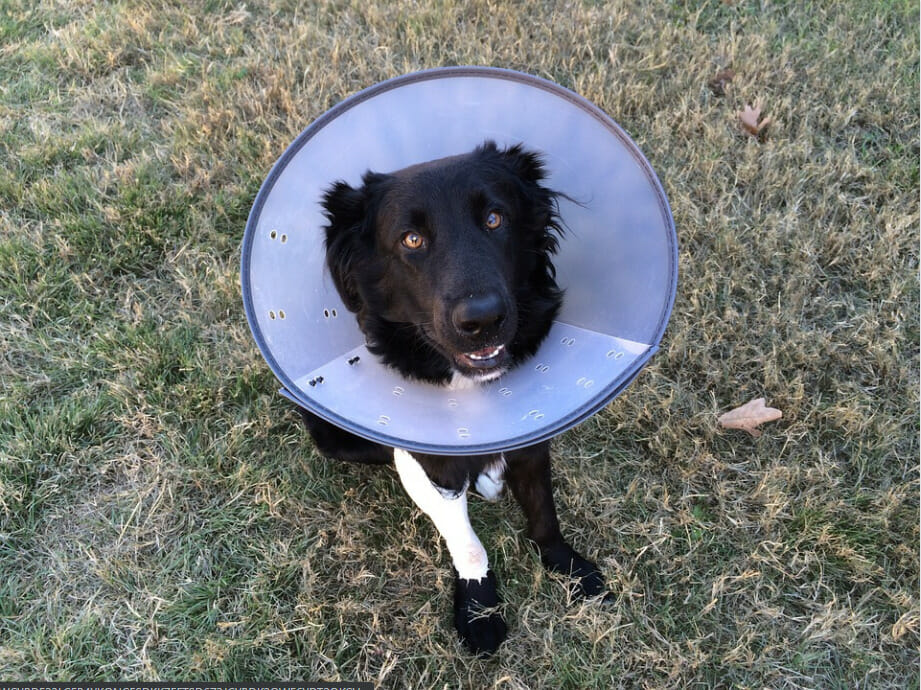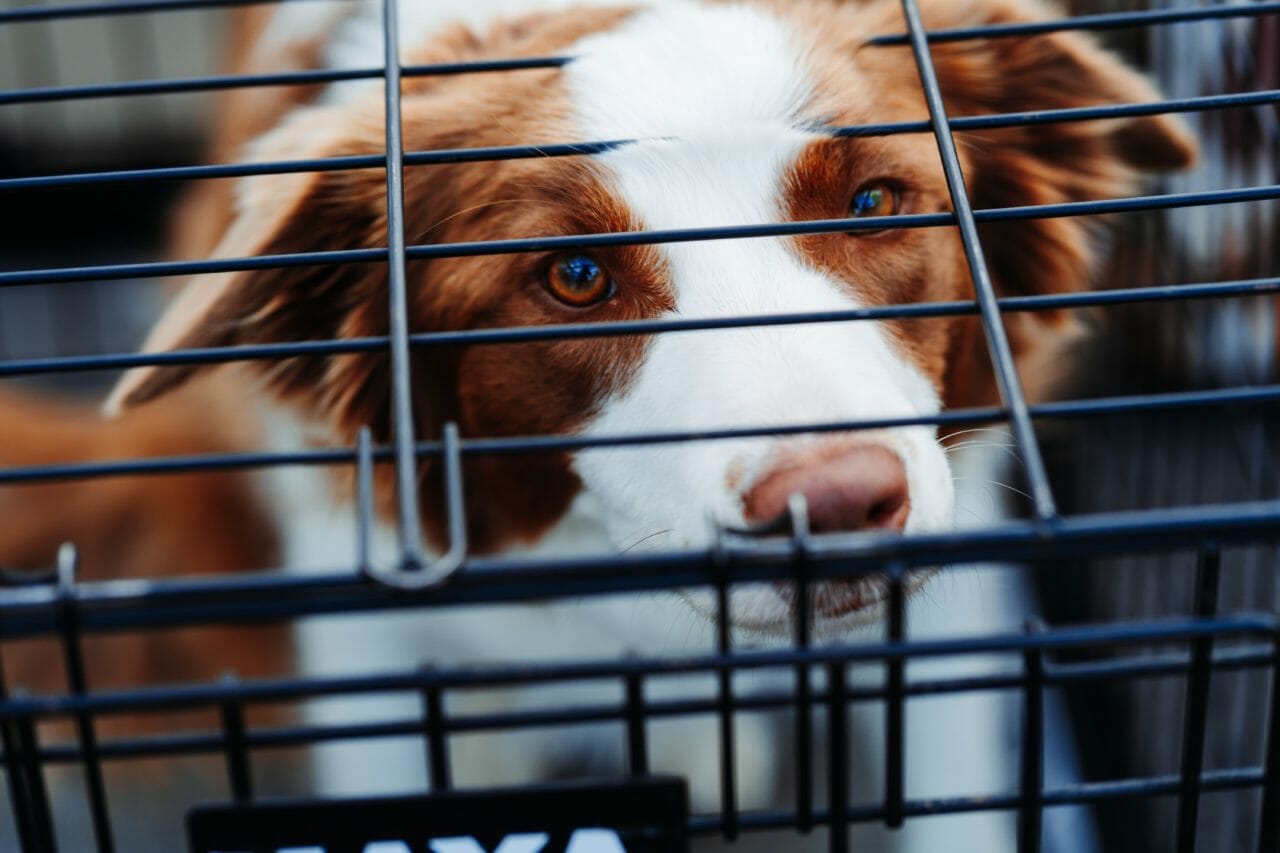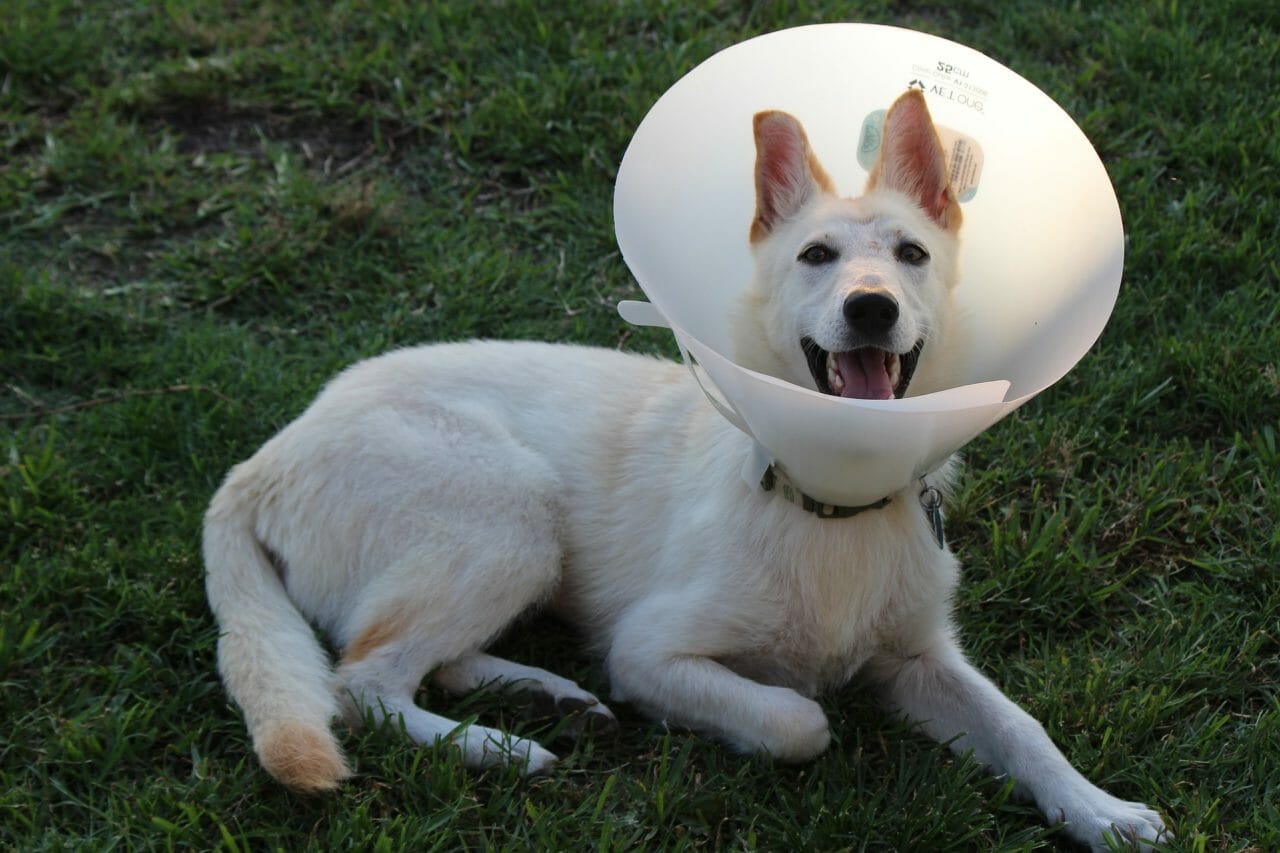Learn the causes, symptoms, treatment methods, and prognosis for dogs with this rare knee injury.
Knee injuries are a very common source of pain in humans, and it’s not that different for dogs.
Because the knee is in such a high-use, high-stress area of the body, and functions using a complex network of ligaments, problems are hard to avoid. In fact, knee injuries are one of the leading causes of lameness in dogs, with 85% of orthopedic injuries being some form of cranial cruciate ligament, or ACL/CCL injury.*
However, ACL injuries aren’t the only reason your dog may be limping, and they aren’t even the only cruciate ligament injury that can cause your dog to limp. Aside from arthritis and patella luxation, other leading causes of knee injuries in dogs, a caudal cruciate ligament rupture, or CaCL rupture, is a rare but serious cause of lameness in dogs.
This article will go over what exactly a CaCL rupture is, what kind of pets get it, how it’s diagnosed, and what treatment options are.
* The terms ACL and CCL may be used interchangeably because ACL, or anterior cruciate ligament, is what it’s called in humans, while CCL, or cranial cruciate ligament is what it’s called in dogs. These are both different from CaCL, the caudal cruciate ligament.
View our Guide to CCL Injuries for additional CCL information.
What Is a Caudal Cruciate Ligament Rupture?
In order to understand this injury, it’s important to understand a little bit about how the knee works.
Knee Anatomy
The joint in the knee is known as the stifle. This is the joint that connects your femur, or upper leg, with your tibia, or lower leg. Between the two bones is a cushion known as the meniscus, which is made up of two C-shaped pieces of cartilage.
To stabilize the stifle’s connection with this cushion and the surrounding bones, there are a series of ligaments that keep the stifle in place and help your knee bend. These consist of:
- The cranial (anterior, or front-facing) and caudal (posterior, or back-facing) cruciate ligaments. These keep your tibia from sliding too far backward or forward.
- The lateral (outward facing) and medial (inward facing, toward the other leg) collateral ligaments. These keep your bones from sliding side to side when extending or flexing your knee.
- The patellar ligaments, connect your kneecap, or patella, to the knee. These keep your patella in place and enable motion of the patella when bending and opening your knee
The caudal cruciate ligament, or CaCL, is located between the two bones on the backside of the knee, and works together with your cranial cruciate to provide stability to the stifle joint.
How the Injury Works
When a dog has a caudal cruciate ligament rupture, the CaCL experiences a partial or complete tear. This compromises the stability of the stifle joint as a whole.
If this condition is not treated, long-term instability results and can cause arthritis or degenerative joint disease (DJD) in the stifle joint.
Causes and Risk Factors of Caudal Cruciate Ligament Rupture in Dogs
Although larger dogs tend to get this injury more frequently, dogs across all sizes, breeds, ages, and genders are susceptible.
Unlike cranial cruciate ligament ruptures, caudal cruciate ligament ruptures are relatively rare. This is because the ligament simply isn’t positioned in a high-impact place in the knee, and forces that cause ligament injuries are far more likely to fall on the cranial cruciate ligament.
For your dog to experience an isolated tear of the CaCL, a significant force has to be placed on the tibia in a cranial-to-caudal direction. This means that something has to hit the top of the tibia from the front and force it to move backward, which is a somewhat rare scenario.
The most common causes of caudal cruciate ligament rupture are:
- Falling on the leg while the knee is flexed.
- Sudden impact from outside forces when the knee is flexed or positioned in a certain way, such as car accidents.
Oftentimes, caudal cruciate ligament ruptures happen in conjunction with injuries to other ligaments in the knee, so it’s important to get an accurate diagnosis from a qualified veterinarian who has experience with such injuries.
Signs and Symptoms
A dog with a caudal cruciate ligament rupture will display non-weight bearing lameness in the affected leg. This means your pup will be limping and refraining from putting any weight on the leg at all.
This lameness will gradually improve, but your dog won’t exhibit the mobility they had prior to the injury. This lack of mobility may be subtle, and can even go unnoticed by owners who believe the dog has fully healed.
Since the ligament’s primary function is to stabilize the joint while it’s flexed, your dog may have a normal gait when walking but may exhibit some lameness during strenuous activity.
How Is Caudal Cruciate Ligament Rupture in Dogs Diagnosed?
Veterinarians can diagnose caudal cruciate ligament ruptures or tears by evaluating the knee for signs of instability.
Injuries of the caudal cruciate ligament are harder to identify than cranial cruciate ligament ruptures. Joint looseness may be less evident in CaCL injuries unless the injury is significant and incorporates various ligament injuries.
In order to examine the extent of the injury, veterinarians will:
- Use radiographs to see which ligaments are affected. Small bone opacities may point to tears of the ligament, and the tibial plateau may also be displaced.
- Use an arthroscopy to verify that the caudal cruciate ligament is affected. This is the only method to obtain a firm diagnosis and rule out other ligament injuries.
Treatment
For small dogs with relatively sedentary lives, medical management is a viable option. This would consist of limiting activity to short, easy leash walks for 9 weeks.
For larger, more active dogs, surgery is often the most viable treatment. This surgery involves removing pieces of the torn ligament and stabilizing the joint with a variety of techniques that include:
- Extracapsular sutures. Placing special “extracapsular” sutures on the outside of the joint capsule. Sutures are placed on either side of the knee and are secured to the fibula on the lateral (outer) side and the tibia on the medial (inner) side, respectively.
- Tenodesis of the popliteal tendon. Stabilizing the knee by securing the popliteal tendon to the bone with a screw. The popliteal tendon wraps around the back of the stifle, which puts it in an ideal position to support the same area the caudal cruciate ligament supports.
- Stabilizing Screws. Taking the medial collateral ligament and redirecting it to be placed more caudally. A screw is used to stabilize the joint.
Wondering which technique will be best for your dog? That depends on the dog, the injury, and the veterinarian.
Can Caudal Cruciate Ligament Rupture Be Prevented?
Because this injury is caused by acute trauma that occurs in fairly unusual circumstances, there is not much you can do to prevent this injury.
What Is the Prognosis for a Dog With This Injury?
If your dog has a caudal cruciate ligament rupture, the good news is that the prognosis is very positive.
When a dog receives properly administered surgery, the probability of a return to pre-injury function and mobility is high. Physical therapy and proper post-surgical care are also essential for a successful outcome.
For dogs who do not undergo surgery or whose owners opt for medical management, the long-term prognosis is less optimistic but still fairly positive. Depending on the severity of the rupture, many dogs can still recover without surgery if proper medical management is taken.
And, unlike cranial cruciate injuries, caudal cruciate ligament injuries seem to result in slower progressions of degenerative joint disease. This means your dog will enjoy higher mobility for longer, even if the rupture does not heal entirely.
If you’d like to learn more about pet injuries, treatment methods, pre- and post-surgery information, and techniques to ensure a high quality of life, browse our other articles at RehabPet.com.



